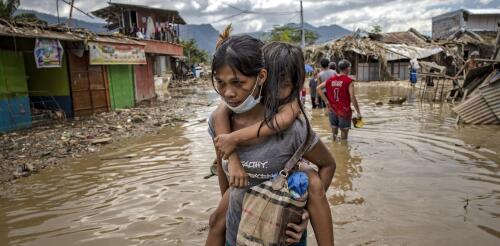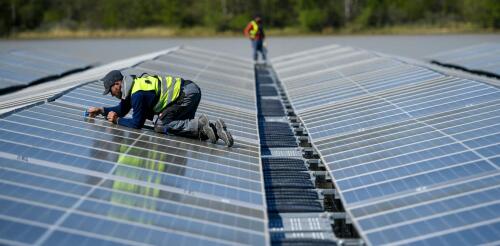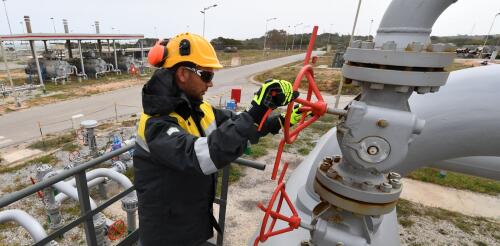low-income countries
Shortly after the opening ceremony of the 2023 United Nations climate negotiations in Dubai, delegates of nations around the world rose in a standing ovation to celebrate a long-awaited agreement to launch a loss and damage fund to help vulnerable countries recover from climate-related disasters. But the applause might not yet be warranted. The deal itself leaves much undecided and has been met with criticism by climate justice advocates and front-line communities. I teach global environmental politics and climate justice and have been attending and observing these negotiations for over a decade to follow the demands for just climate solutions, including loss and damage compensation for countries that have done the least to cause climate change. COP28 President Sultan Ahmed al-Jaber, center, walks with world leaders and representatives of countries to the climate summit’s opening ceremony. The loss and damage fund was one of the fi...
The year 2022 was a tough one for the growing number of people living in food insecurity and energy poverty around the world, and the beginning of 2023 is looking bleak. Russia’s war on Ukraine, one of the world’s largest grain and fertilizer feedstock suppliers, tightened global food and energy supplies, which in turn helped spur inflation. Drought, exacerbated in some places by warring groups blocking food aid, pushed parts of the Horn of Africa toward famine. Extreme weather disasters have left trails of destruction with mounting costs on nearly every continent. More countries found themselves in debt distress. But below the surface of almost weekly bad news, significant changes are underway that have the potential to create a more sustainable world – one in which humanity can tackle climate change, species extinction and food and energy insecurity. I’ve been involved in international sustainable development for most of my career and now teach climat...
Russia’s war on Ukraine has cast a shadow over this week’s meetings of world leaders at the G-20 summit in Bali and the United Nations climate change conference in Egypt. The war has dramatically disrupted energy markets the world over, leaving many countries vulnerable to price spikes amid supply shortages. Europe, worried about keeping the heat on through winter, is outbidding poor countries for natural gas, even paying premiums to reroute tanker ships after Russia cut off most of its usual natural gas supply. Some countries are restarting coal-fired power plants. Others are looking for ways to expand fossil fuel production, including new projects in Africa. These actions are a long way from the countries’ pledges just a year ago to rein in fossil fuels, and they’re likely to further increase greenhouse gas emissions, at least temporarily. But will the war and the economic turmoil prevent the world from meeting the Paris climate agreement’s lon...
Developing nations were justifiably jubilant at the close of COP27 as negotiators from wealthy countries around the world agreed for the first time to establish a dedicated “loss and damage” fund for vulnerable countries harmed by climate change. It was an important and hard fought acknowledgment of the damage – and of who bears at least some responsibility for the cost. But the fund might not materialize in the way that developing countries hope. I study global environmental policy and have been following climate negotiations from their inception at the 1992 Rio Earth Summit. Here’s what’s in the agreement reached at COP27, the United Nations climate talks in Egypt in November 2022, and why it holds much promise but very few commitments. 3 key questions All decisions at these U.N. climate conferences – always – are promissory notes. And the legacy of climate negotiations is one of promises not kept. This promise, welcome as it is,...
Leer in español There are questions that worry me profoundly as a population- and environmental-health scientist. Will we have enough food for a growing global population? How will we take care of more people in the next pandemic? What will heat do to millions with hypertension? Will countries wage water wars because of increasing droughts? These risks all have three things in common: health, climate change and a growing population that the United Nations determined passed 8 billion people in November 2022 – double the population of just 48 years ago. In my 40-year career, first working in the Amazon rainforest and the Centers for Disease Control and Prevention, and then in academia, I have encountered many public health threats, but none so intransigent and pervasive as climate change. Of the multitude of climate-related adverse health effects, the following four represent the greatest public health concerns for a growing population. Infectious disease...



